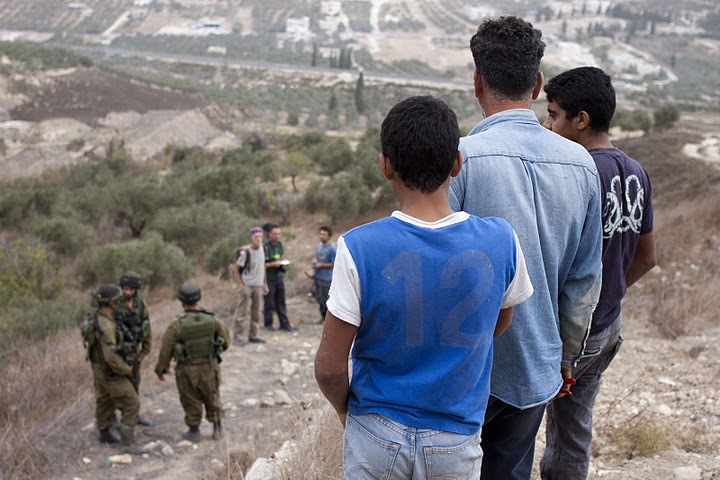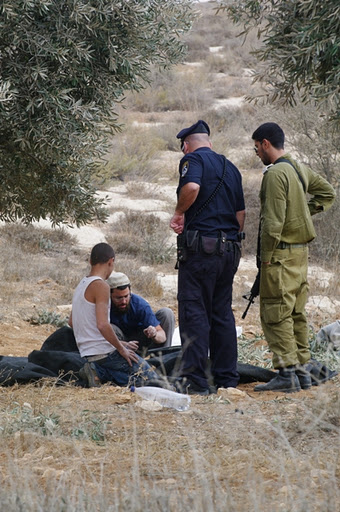Tag: Settlers
-
Refusing to die in silence: Palestinians resist settler violence during the olive harvest
Ben Lorber 29 October 2011 | Mondoweiss As this year’s olive harvest sends Palestinian families across all of historic Palestine out to their olive trees, a new nonviolent resistance group called Refusing to Die In Silence is patrolling the West Bank, protecting harvesters from increased settler violence. The 2011 olive harvest, which began in early…
-
Settlers desperately try to fit the role by stealing olives
by Aida Gerard 25 October 2011 | International Solidarity Movement, West Bank On Tuesday, illegal settlers from the Susiya settlement harvested the olive trees belonging to the Abu Sabha family from Susiya and Yatta, South Hebron Hills. Around 12 o’ clock a villager from the area spotted two settlers picking olives from the land of…



